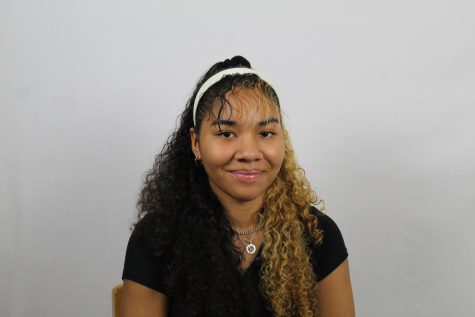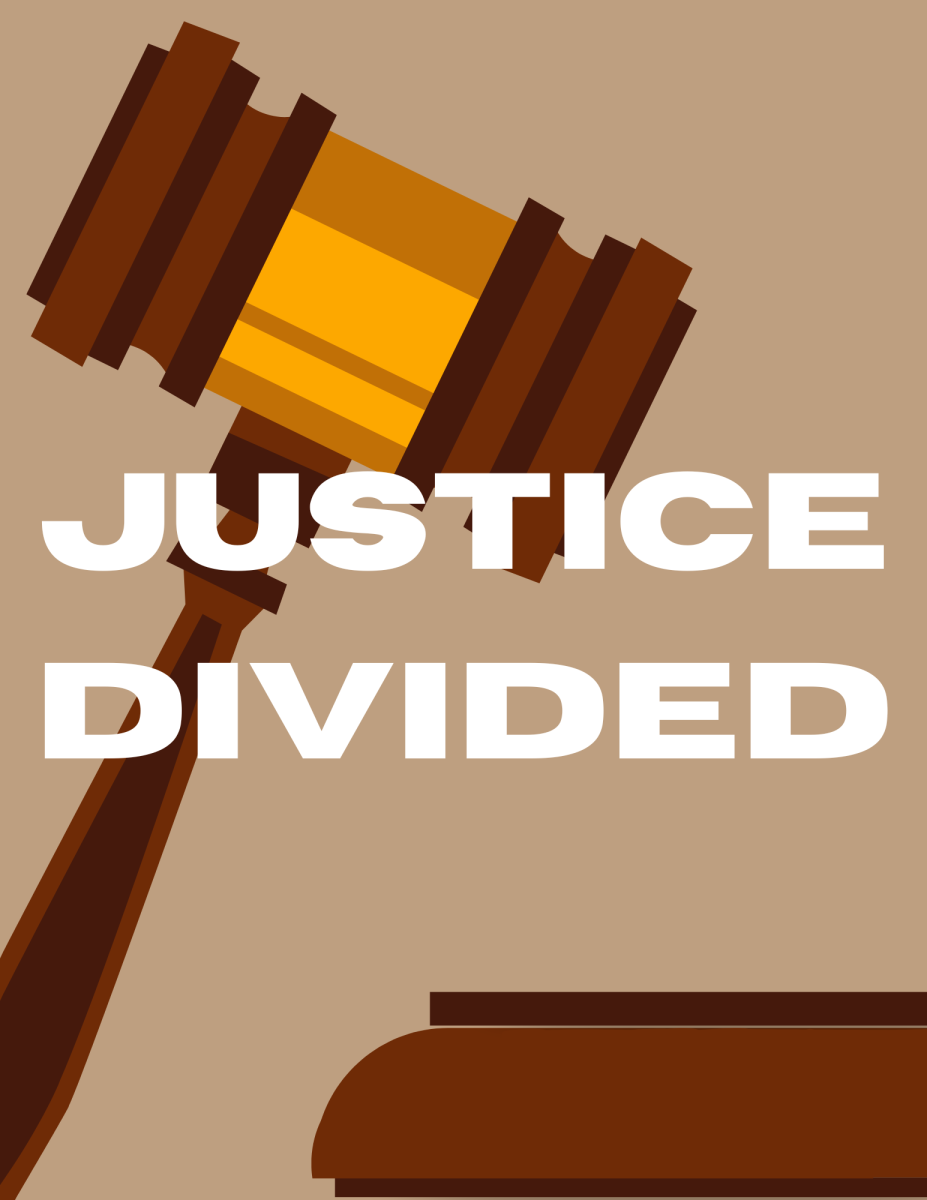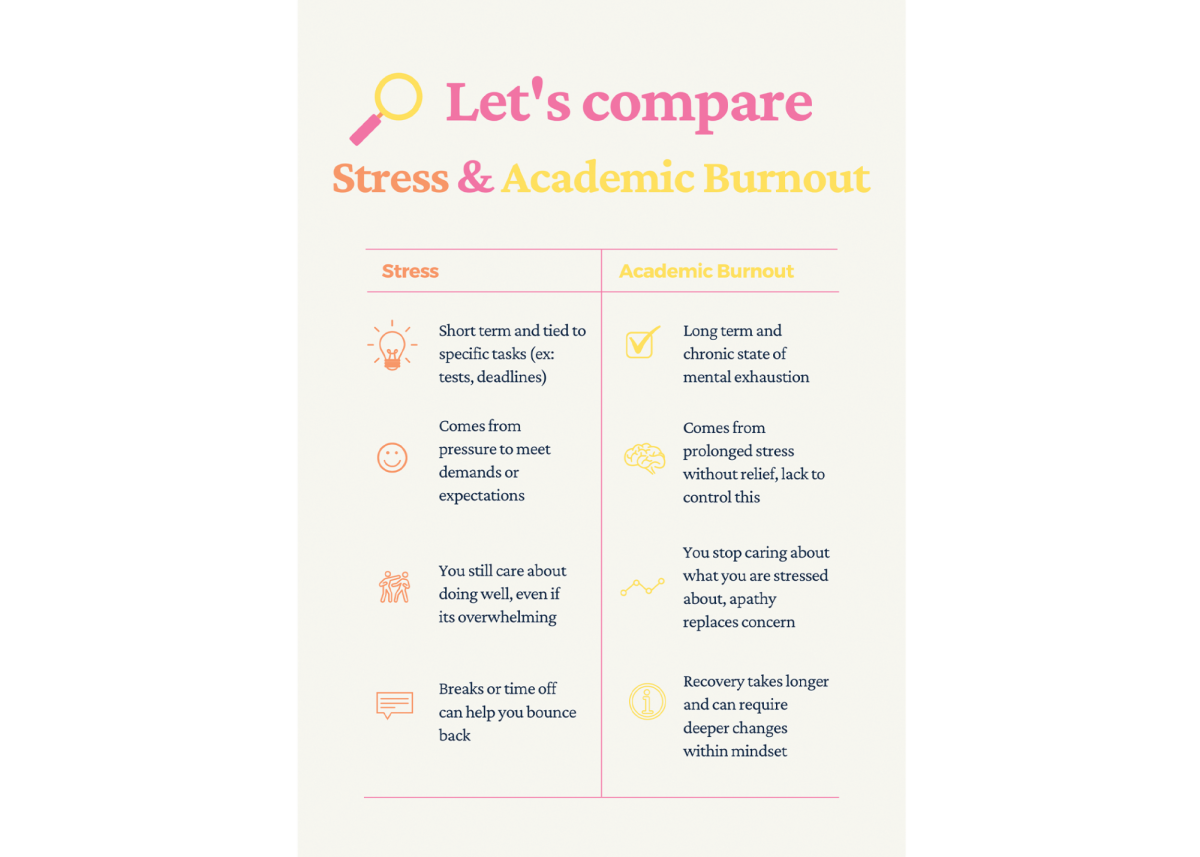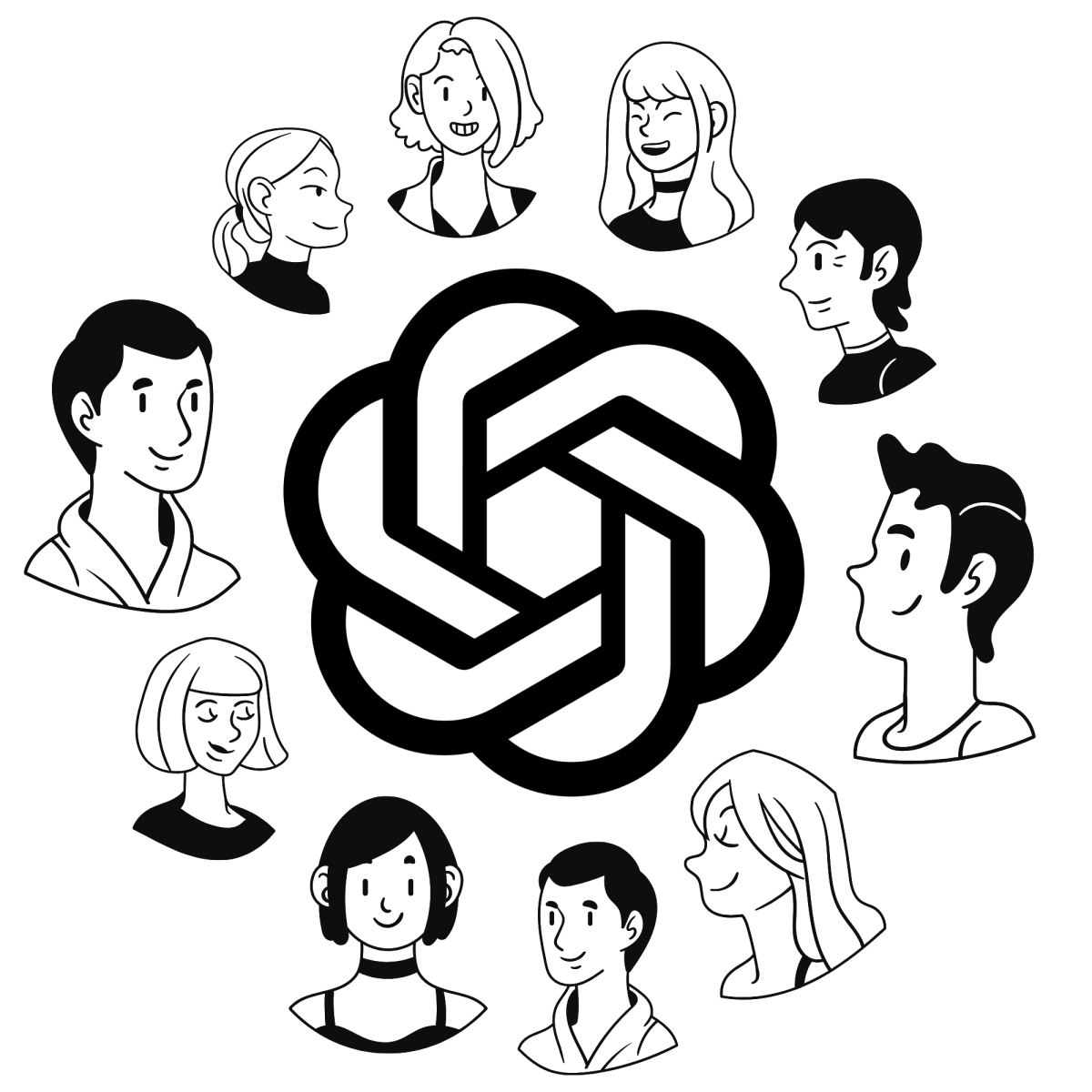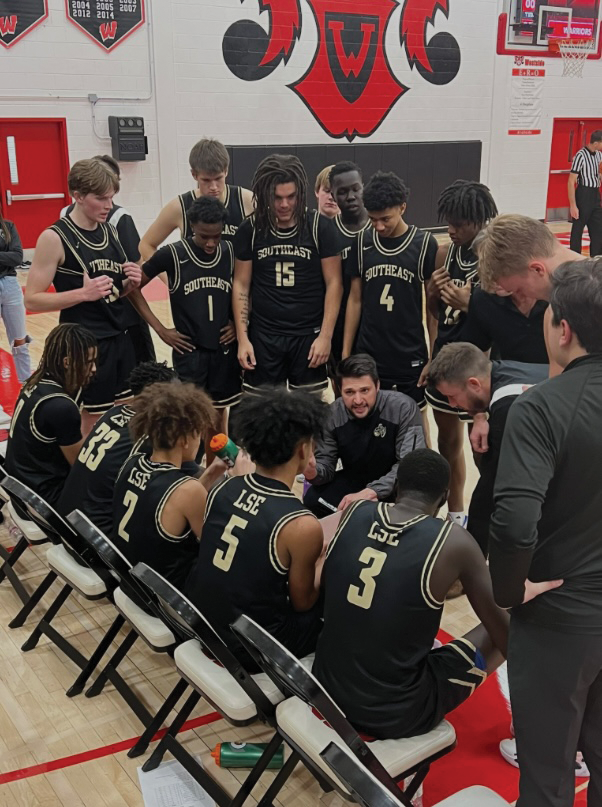Unerasable
Native students and community members fight to preserve their culture
May 26, 2022
Stepping into the prayer camp at Wilderness Park, the biting sky seemed to lighten. The first glimpse of the teepees were seen just over a small grassy hill as the soft ground deflated with every step he took. A scene of people emerge from the wooded area, among those is Native American activist Kevin Abourezk. He is here to take a stand.
Abourezk, who is a member of the Rosebud Sioux and managing editor of Native news site, Indianz.com, is at this location to protect something that is sacred to him and fellow members of the Native community.
In an April 2022 Lincoln Journal Star article, Abourezk told reporter Margaret Reist that he and other opponents were opposing the development near Wilderness Park. Abourezk explained that the sweat lodge there has been used as a prayer site and purifying space for the past 40 years and was commonly used as a place to simply connect with nature.
In the interview, Abourezk compares this ground to a church and said he believes a different, more predominantly white spiritual ground, would be treated with more respect.
“Imagine, if you are Christian, trying to take communion as cars drive by, or say a prayer as exhaust fumes choke you,” he said. “This is a reality we are facing … no matter how many accommodations you make, it is what it is.”
Abourezk and others at the prayer camp were there to take a stand to protect this cultural site. This act of protest is nothing new for Native activists. For generations, Native peoples have been fighting this fight, all while facing great obstacles.
Generational Trauma
“Generational Trauma” is a phrase used to describe a type of multi-generational trauma that directly affects one’s immediate family rather than an entire cultural, racial, or ethnic group.
In comparison, historical trauma refers to the multi-generational trauma that circulates within one or more groups for multiple generations and is projected to persist for future generations as well.
Historical trauma is the effect of cross-generational trauma from historical losses. These losses such as slavery, forced immigration and violent colonization have caused a loss of history and resulted in a psychological and physiological trauma which can affect upcoming generations.
Lincoln Southeast High School (LSE) sophomore Addison Treat says that due to the historical trauma that still exists within her family, she feels that as a Native American in this generation, it is hard for her to connect with her culture because she wasn’t taught about it growing up.
“I think that intergenerational trauma has impacted my family and my culture,” Treat says. “In the past, Native Americans have had to deal with many losses such as their land, getting ripped away from their families, loss of their connection to nature and relatives around them and much more.”
Treat and her family are not alone. Recent generations of Native Americans face this same problem, still living out the consequences of forced assimilation.
Assimilation Programs
According to the Encyclopedia Britannica, the definition of assimilation is “taking on the traits of the dominant culture to such a degree that the assimilating group becomes socially indistinguishable from other members of the society. As such, assimilation is the most extreme form of acculturation”.
A May 2022 article from CNN titled, “Interior Department says Native American children were forced into assimilation at 408 federal boarding schools,” journalist Nicole Chavez uncovers a recently published review from the Department of Interior detailing the “past efforts by the federal government to assimilate Native American children into White American society by separating them from their families and stripping them of their languages and cultures.”
The report outlines some of the conditions many of the children endured, a list of boarding schools and more than 50 unmarked burial sites.
“Children and teenagers at these schools were subject to “systematic militarized and identity-alteration methodologies” by the federal government, including getting English names, haircuts, wearing military or other uniforms, and being banned from using their native languages and exercising their religions,” the report states.
The rules were enforced through punishment which involved solitary confinement, flogging, withholding food, whipping, slapping, or cuffing.
These boarding schools persisted for decades to ensure Native Americans were robbed of their identities. Exact endings are hard to delineate due to the compulsory removals not being enforced until the 1970s.
Nine of these schools were opened and operated in Nebraska for decades.
According to an Omaha World Herald article from May 12, 2022, in addition to the known Genoa U.S. Indian Industrial School, which was located in Genoa, Nebraska, researchers identified eight additional schools that met the Interior Department’s criteria of federal Indian boarding schools.
Because of the forced assimilation that occured in these boarding schools, many Native families still suffer from the underlying fear of properly embracing their culture.
According to Abourezk, his family refused to teach or allow him to speak his native language (Lakota) because they were brainwashed into thinking that if one would practice formalities like language, religion and other important customs, then it would be difficult to succeed in mainstream society. And if you were to teach your children these things, they too would suffer.
“People would come over, and they would try and talk to me in Lakota,” Abourezk says. “And they’d say ‘don’t talk to him in Lakota, we don’t want him to know that’.”
Now that Abourezk is older, he has been trying to learn his native language but feels that it is more challenging to learn it as an adult.
“It’s tougher to learn a language and even harder to hold onto it unless you are constantly practicing it,” Abourezk said.
The Suppression of Native Identity
The Native American identity and culture has been oppressed and suppressed in the United States (U.S) due to assimilation.
However the effects of assimilation go beyond historical trauma. Larger changes have presented themselves in ways of traditional upbringing of children being lost, family structure being Americanized, higher addiction rates and skyrocketing suicide rates in the Native American culture.
According to one LSE student, who wishes to remain anonymous, their native relatives on the reservation suffer from alcoholism and abuse due to generational trauma.
“After many years of our culture getting taken from us, we have had countless generations of broken families, addicted relatives, and survivors of various kinds of abuse,” they said.
However, it is not just protection of their culture, or freedom of expression natives are fighting for nowadays, currently many don’t even have the right to vote.
The American Bar Association (ABA) details the struggles Native Americans residing in the U.S. have had to endure.
“The Voting Rights Act of 1965 helped to secure and protect that right for many Native Americans and Alaska Natives. With the Voting Rights Act, voter participation among Native Americans increased. However, the Supreme Court invalidated the Section 5 preclearance formula in 2013 (Shelby County v. Holder, 570 U.S. 529 (2013)), removing one of the most powerful tools to ensure equal access to the ballot,” Patty Ferguson-Bohnee states in her 2020 article titled, “How the Native American Vote Continues to be Suppressed.”
Efforts to preserve Native American culture
To protect or preserve an entire culture, many aspects of the culture must be taken into consideration. Preservation of the language, protecting resources, maintaining sacred customs, continuing religion and more are all uniquely important parts that make up a community such as the many Native American nations.
While there is great speculation as to how the Native American culture could be protected, it seems as though many organizations are approaching it with an emphasis on education.
Native Hope is a national nonprofit organization that addresses injustices done to Native Americans by sharing native stories, providing educational resources and assisting Native communities. They believe that one of the more prominent challenges to preserving native culture is that Native Americans are a scattered race of people.
Currently, the U.S. Census Bureau estimates that there are roughly 6.8 million Native Americans living in the U.S., however only 22 percent of them live on reservations. This leaves the rest of them dispersed across the country.
“For people of Native American descent who live off reservations, the challenge is to see what their Native American identity and ancestry means for their lives,” Native Hope’s website states. “In many cases, people of Native American descent are full of a longing to know more about their ancestors and to reconnect with a tribe or culture they have lost.”
Abourezk, who is currently fighting to protect native traditions in Lincoln, believes preservation “starts with the children, because that’s usually where the greatest change happens”.
American Indian educator and co-author of “Becoming Visible”, Mandy Smoker Broaddus argues that education surrounding Native American culture and heritage must be improved in the schools.
In her blog post on the Education Commission of the States’ website, Broaddus writes that improving the quality of and access to Native American curriculum benefits all students.
“For non-native students, it can lead to greater awareness and compassion. For native students, it can teach strength and resiliency, foster positive identity development and help uphold tribal sovereignty,” she said.
This idea of Native consciousness may seem far from home, however LSE students are feeling the effects of the lack of education surrounding Native Americans and their culture.
One member of the LSE Native American Caucus wrote that their younger brother used to talk about Native Americans as if they were “not real people but rather a product of fantasy”. The student went on to say that after this happened, their mother started teaching them more about Native American culture.
While many schools make an effort to introduce both native and non-native students to the Native Americans’ history and culture, many are inaccurately represented with false narratives generating stereotypes and biases towards people of that community. This is where comprehensive education can help.
“When all students know the correct narrative about Native Americans and learn the vital, unique and ongoing contributions of this country’s original inhabitants, there is greater understanding — and ultimately better outcomes for students, communities and our nation,” Broaddus said.
Is Education Enough?
With many setbacks, the Native American communities are compelled to fight for their preservation, seeing that their people were the targets of exclusion in the U.S. for so many years.
Some question if education alone is enough, but the Burke Museum of Natural History and Culture in Seattle, Washington, has a page dedicated to bringing the Native American spark back to life.
According to a post on the museum’s website, it can be hard to start a conversation about Native Americans with such a complex history.
They recommend going out to indigenous grounds (with permission) and acknowledge the land and the people who have always called it home. The post on the website goes on to say that this, “encourages students to think about the significance of [the] place, and the continued existence of Indigenous people”.
They encourage teachers and parents to learn about Native history straight from the source. Students can visit local tribal lands, museums, cultural centers, as well as attend events.
Here at LSE, there is a group of young native youth that gather once every month, and during these meetings talk about origin stories, upcoming events within the Native community, and sometimes even bring in Native speakers to give cultural lessons.
“It is a time to ‘indigenize’ their lives and celebrate students and Native American successes, post-invasion era full of death, destruction, and disintegration,” Native American Caucus sponsor Kris Ross said.
Students in this group get to learn about things that are going on in their community and be together. According to Ross, the club promotes academic success and advances the knowledge of Native American heritage and culture. It also provides community support for Native American Students.
Additionally, students get to work on projects and take classes. Ross said they are currently working on a garden at UNL and taking classes in an effort to “revitalize and emulate images of a glorious past every Saturday morning at UNL”.
One year, Ross helped her students get flags from their tribes to display at school.
Even if Native Americans don’t always have the pleasures of indulging themselves or their children in large scale traditions, such as pow wows and sweat lodges, there will always be the power of storytelling. If nothing else, people can always revisit the past with the immersive stories and take smaller steps to promote change for the future.
“I think that the more people who take steps to learn more about their culture, and embrace it more, it will be restored,” Treat said.
Native Hope recognizes the power storytelling holds and the impact they have on current Native generations today and encourages the elders in the community to share their knowledge.
“If young Native Americans turn to the stories of the past, they will see the world through the eyes of their elders. The stories reinforce those values and remind the people of the kind of life they should lead,” Native Hope said. “[With storytelling] The Native community will continue to grow, and future generations well after this one will continue to learn about and participate in cultural activities like ceremonies, the art’s and celebrations.”
Sharing stories can keep a culture alive and thriving. According to one LSE student’s response to the survey, the Native identity is strong. “I think our culture is too strong and beautiful to be lost forever.”


